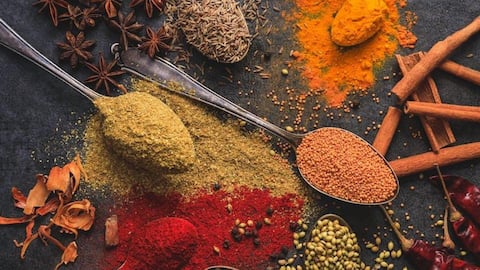Spice story: India's flavorful heritage
What's the story
India, often hailed as the "land of spices," boasts a rich and aromatic tapestry of flavors that has captivated the world for centuries. From the ancient spice routes to the bustling spice markets of today, each spice tells a story of exploration, commerce, and the diverse culinary heritage of the Indian subcontinent. Let us delve into the captivating journey of Indian spice origin.
Origin
Ancient roots: Spices in Indian history
The history of Indian spices which dates back thousands of years, is a captivating journey through time, trade, and cultural exchange. The use of spices wasn't merely confined to culinary purposes; they were revered for their medicinal and preservative qualities. Ancient texts like the Rigveda, mention the use of spices and herbs in medicine to heal wounds and relax senses.
Spice route
Spice routes and trade: Global exchange
Indian spices were among the most sought-after commodities in the ancient world, leading to the establishment of the famous spice routes. The allure of spices such as cardamom, cinnamon, and cloves attracted traders from the Middle East, Europe, and other parts of Asia. These spice routes not only facilitated trade but also became conduits for cultural exchange and the spread of culinary techniques.
Colonial impact
Colonial era's spice plantations
The colonial era brought a surge in spice cultivation, with European powers vying for control over spice-rich regions. The Portuguese, Dutch, and later the British established spice plantations in India, particularly in regions like Kerala. This period saw the introduction of spices like nutmeg, mace, cardamom, cinnamon, turmeric and cloves which were originally native to southeast Asia, into Indian agriculture by traders.
Middle east roots
Middle Eastern roots
Cumin, with its warm and earthy flavor, has a long history in Persian cuisine. Persian traders facilitated the spread of cumin from its origins in the Mediterranean region to the Indian subcontinent. Cumin along with pepper and salt was highly valued by the Arab traders due to its natural food preservation qualities. Similarly, fennel and sesame seeds have Mediterranean and African roots respectively.
Barter trade with spices
Spices as cultural currency
Indian spices weren't merely commodities; they were cultural currency, exchanged along ancient trade routes that connected diverse civilizations through the fusion of traditions, languages, and customs. They acquired a status as luxury goods, enhancing their value in barter transactions. The desire for these prized commodities drove the wheels of trade and led to the establishment of spice-centric marketplaces.
